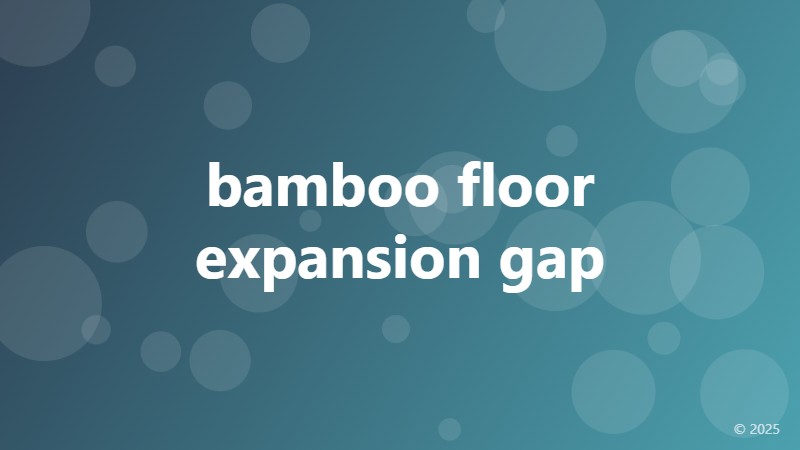bamboo floor expansion gap

Understanding Bamboo Floor Expansion Gaps: A Comprehensive Guide
When it comes to installing bamboo flooring, one crucial aspect to consider is the expansion gap. Also known as the expansion joint, this gap is a deliberate space left between the flooring and the wall or other fixed objects to allow for natural expansion and contraction of the bamboo material. In this article, we will delve into the importance of bamboo floor expansion gaps, how to calculate them, and some best practices for installation.
Why Are Expansion Gaps Necessary for Bamboo Flooring?
Bamboo, like other natural materials, is prone to expansion and contraction due to changes in temperature and humidity. Without an expansion gap, the flooring can buckle, warp, or even crack, leading to costly repairs and replacements. The gap allows the flooring to breathe and move freely, reducing the risk of damage and ensuring a longer lifespan for your bamboo floor.
Calculating the Ideal Expansion Gap for Your Bamboo Floor
The ideal expansion gap size varies depending on the type of bamboo flooring, room temperature, and humidity levels. As a general rule, the following guidelines can be applied:
- For rooms with average temperature and humidity, a 1/4 inch (6 mm) gap is sufficient.
- For rooms with high humidity or temperature fluctuations, a 1/2 inch (12 mm) gap is recommended.
- For rooms with extreme temperature or humidity conditions, a 3/4 inch (18 mm) gap or more may be necessary.
Best Practices for Installing Bamboo Flooring with Expansion Gaps
When installing bamboo flooring, it's essential to follow these best practices to ensure a successful and durable installation:
- Leave the recommended expansion gap around the perimeter of the room, as well as around any fixed objects such as heating vents or doorways.
- Use a foam or rubber expansion joint filler to fill the gap, ensuring it's level with the flooring surface.
- Avoid using rigid materials like wood or metal to fill the gap, as they can restrict the flooring's natural movement.
- Regularly inspect and maintain the expansion gap to ensure it remains clear of debris and obstructions.
Conclusion
In conclusion, understanding and implementing bamboo floor expansion gaps is crucial for a successful and long-lasting installation. By following the guidelines and best practices outlined in this article, you can ensure your bamboo floor remains beautiful, durable, and functional for years to come. Remember, a well-planned expansion gap is key to a happy and healthy bamboo floor.